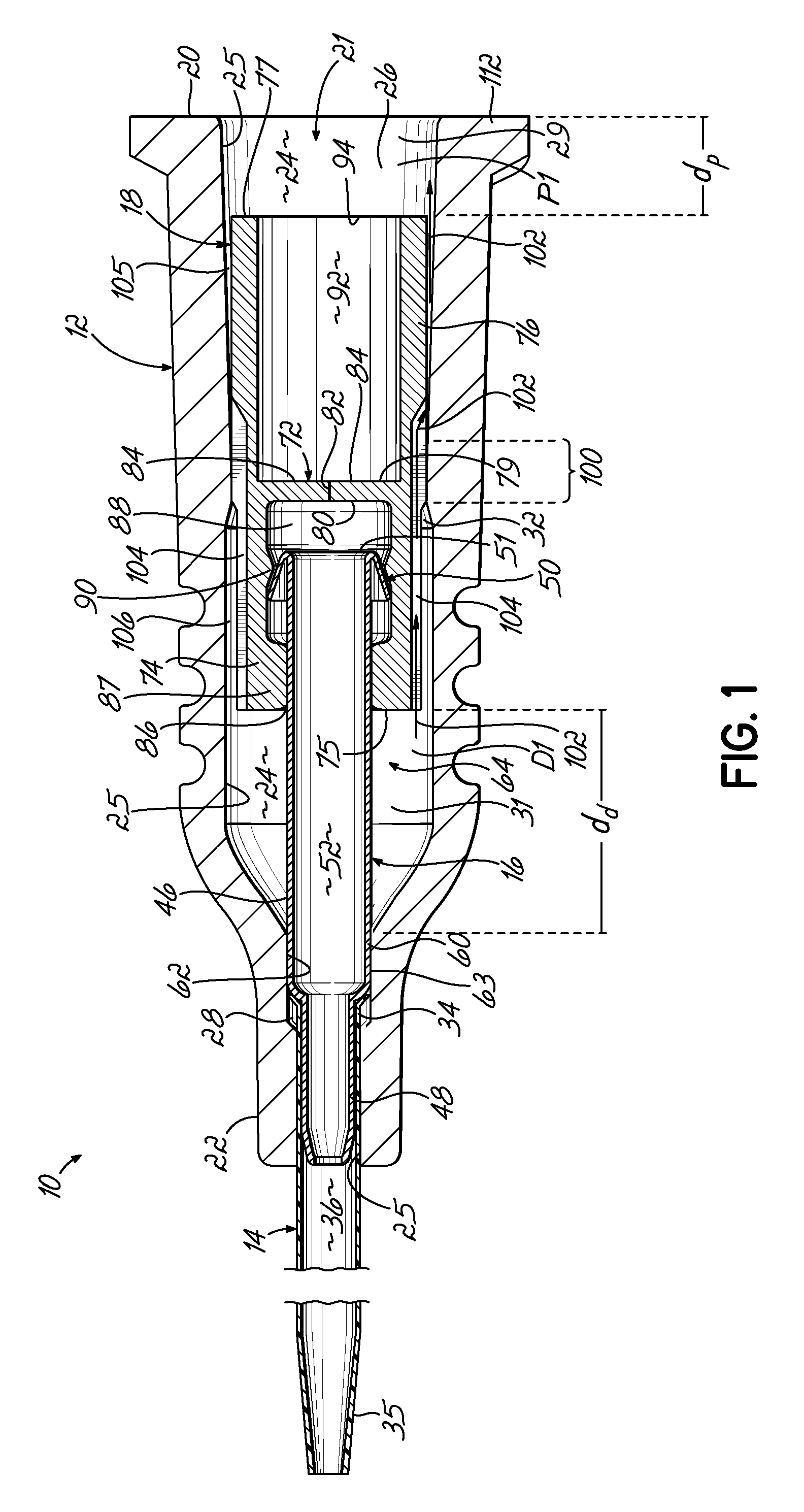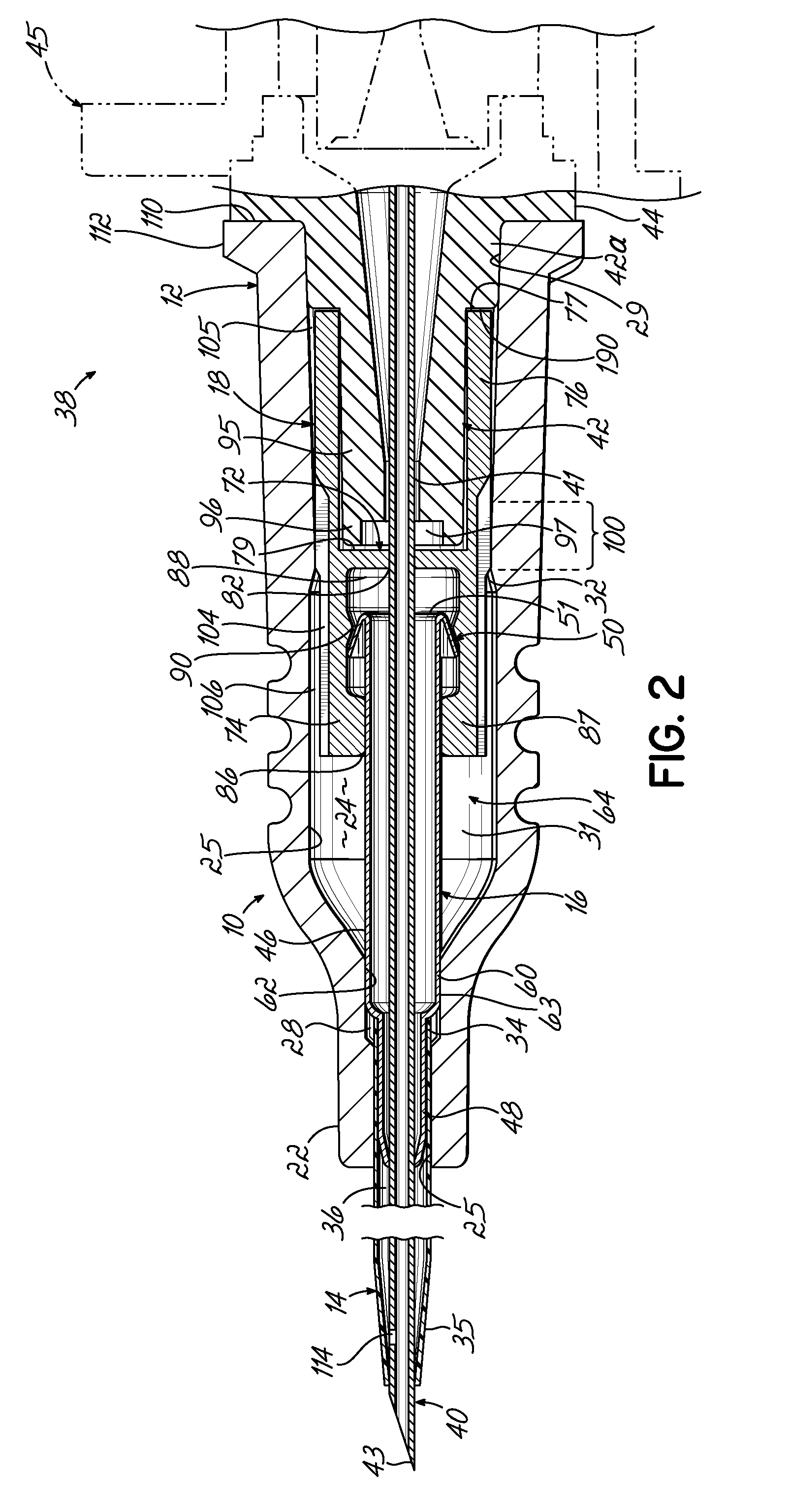Catheter assembly with seal member
a technology of seal member and catheter, which is applied in the field of catheter assembly with seal member, can solve the problems that none seems to have garnered commercial acceptance, and achieve the effect of improving the hemostasis seal arrangemen
- Summary
- Abstract
- Description
- Claims
- Application Information
AI Technical Summary
Benefits of technology
Problems solved by technology
Method used
Image
Examples
Embodiment Construction
In reference to FIG. 1, a catheter assembly 10 in accordance with various features of the present invention includes a catheter hub 12, a catheter tube 14 secured to and extending distally of the catheter hub 12, an actuator 16 secured to the catheter hub 12 and extending axially therewithin, and a seal member 18 disposed in the catheter hub 12 and movably supported on the actuator 16. The seal member 18 is axially shiftable relative to the actuator 16, such as by sliding axially therealong, between a closed or sealed position shown in FIG. 1 and an opened or actuated position (shown, for example, in FIG. 10). In the closed position, the catheter hub 12 is substantially sealed off from the catheter tube 14 such that blood flow into the catheter hub 12 is restricted. In the opened position, however, and as will be discussed in more detail below, the seal member 18 is pushed over the actuator 16 such that the catheter hub 12 and catheter tube 14 are in open fluid communication.
The cat...
PUM
| Property | Measurement | Unit |
|---|---|---|
| lengths | aaaaa | aaaaa |
| lengths | aaaaa | aaaaa |
| lengths | aaaaa | aaaaa |
Abstract
Description
Claims
Application Information
 Login to View More
Login to View More - R&D
- Intellectual Property
- Life Sciences
- Materials
- Tech Scout
- Unparalleled Data Quality
- Higher Quality Content
- 60% Fewer Hallucinations
Browse by: Latest US Patents, China's latest patents, Technical Efficacy Thesaurus, Application Domain, Technology Topic, Popular Technical Reports.
© 2025 PatSnap. All rights reserved.Legal|Privacy policy|Modern Slavery Act Transparency Statement|Sitemap|About US| Contact US: help@patsnap.com



